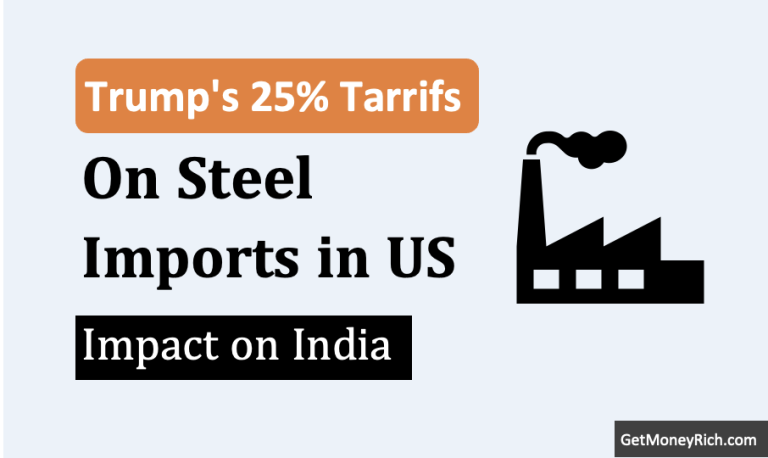I was scrolling through the news and something caught my eye, a Reuters article about India’s telecom regulator throwing a bit of a googly at Elon Musk’s Starlink. I think, all stock market investors or even those people who has some cash parked in equity funds, understanding this news piece can be both useful and interesting. What’s the headline? India’s planning to limit satellite broadband licenses to five years instead of the 20 years Musk wanted. Sounds technical, right? Don’t worry, I’m here to declutter it down in a way that’s not only easy to digest but also shows why it could matter to your wallet.
What’s This All About?
Elon Musk has this ambitious project called Starlink.
What is Starlink? It’s basically a network of satellites beaming high-speed internet from space to pretty much anywhere on Earth.
Cool, right? He’s been trying to bring it to India where millions still struggle with spotty internet. But here’s the catch, India’s telecom regulator, TRAI (the rule-makers for phone and internet companies), isn’t fully on board with Musk’s grand 20-year plan. Instead, TRAI is saying, “How about five years to start with?”
Why does this matter? Well, it’s not just about Musk. Big Indian players like Mukesh Ambani’s Reliance Jio and Bharti Airtel are in the mix too. These companies already dominate the telecom scene here, and they’ve got their own ideas about how this satellite internet game should play out.
- Jio wanted a three-year license,
- Airtel was cool with 3-5 years, and
- Now TRAI’s leaning toward five.
- Musk, meanwhile, is like, Guys, I need 20 years to make this affordable and build a solid business.
It’s a classic tug-of-war between a global disruptor and local heavyweights.
What’s a “Satellite Broadband License”?
Let’s keep it simple. Imagine the airwaves that carry your phone signal or Wi-Fi as a big highway.
Companies need permission, a license, to use parts of that highway to send their signals.
For regular telecom like your 4G or 5G, these licenses are auctioned off for 20 years at a time. They cost a fortune, Jio shelled out $19 billion in one auction. But for satellite internet, India’s saying, No, we’ll just allot it administratively, means no auction. Why? Because it’ll be way cheaper. And the twist is, they’re only giving it for five years to see how it goes.
Think of it like renting a shop. Musk wants a 20-year lease to set up his mega Starlink store, but TRAI’s handing him a five-year rental agreement instead, saying, “Let’s see if people actually buy your stuff first.”
Why Five Years? Why Not 20?
Here’s where it gets interesting. TRAI’s playing it safe.
Satellite broadband is still pretty new in India, it is like an experiment. Will people in rural areas sign up? Will it steal customers from Jio and Airtel’s regular broadband? No one’s 100% sure yet.
So, TRAI’s logic is, “Let’s test the waters for five years, figure out how the market behaves, and then decide what’s next.” After five years, they can tweak the price or even change the rules based on how things shake out. It’s TRAI’s way to keep more control in their hands.
Musk, on the other hand, argues that five years is too short.
Building a satellite internet business isn’t cheap, launching satellites, setting up ground stations, convincing customers to buy those funky Starlink dishes, it’s a long game. He’s worried that a short license might force him to jack up prices or limit his plans. According to Musk, this will slow down his dream of blanketing India with fast internet.
Meanwhile, Jio and Airtel are probably smirking a little. A shorter license keeps Starlink on a leash, giving them time to protect their own turf while still cashing in on partnerships with Musk.
Wait, Partnerships? What’s Happening There?
Just this week, Musk teamed up with both Ambani’s Jio (via Reliance) and Bharti Airtel.
The deal? Their massive store networks, think Reliance’s retail empire and Airtel’s reach, will sell Starlink devices.
It’s a win-win, sort of.
Musk gets a huge distribution boost (imagine Starlink kits on shelves next to your Jio SIM card), and Jio and Airtel get a piece of the satellite pie without fully handing over their broadband customers to him.
But here’s the key point, these deals hinge on Starlink getting the green light from Indian regulators. That’s still pending, and this five-year limit might make Musk sweat a bit. For Jio and Airtel, it’s less risky, they’ve already got their core businesses humming along.
What’s In It For Indian Stock Investors?
Alright, let’s get to the part you’re probably most curious about.
If you’ve got money in Indian stocks or mutual funds, here’s what to watch:
- Jio and Airtel Stocks: These giants could benefit short-term. The five-year cap limits how much Starlink can disrupt their broadband game right away. Plus, they’re making money off Musk’s devices. If you hold Reliance Industries or Bharti Airtel, this might keep their stock prices steady. It can even give them a little bump as satellite internet picks up steam.
- Mutual Funds: Mutual funds heavy on telecom (like ones with Jio, Airtel, or smaller players) might see this as a mixed bag. On one hand, cheaper satellite spectrum could spark growth in the sector. KPMG says India’s satellite communication market could hit $25 billion by 2028. On the other, that five-year uncertainty might spook some investors who hate not knowing what’s next.
Five years period is not a long time. Come 2030, if satellite broadband’s a hit, TRAI might hike prices or change the rules. That could shake things up for telecom stocks or funds down the road.
A Broadband Boom?
India’s internet scene is already wild, cheap data, Jio shaking things up a decade ago. But satellite broadband could take it to another level.
Imagine villages with no towers suddenly streaming Netflix or farmers checking crop prices online. Starlink says it can deliver that, and even with a five-year license, it might kickstart something big.
For investors, that’s a critical piece of information. The Reuters piece mentions satellite spectrum will be “substantially cheaper” than regular telecom licenses.
If TRAI gets the pricing right, this could unleash a wave of growth. Companies that adapt, whether it’s Jio selling Starlink kits or Airtel expanding rural reach, could ride that wave.
And if you’re in a mutual fund with tech or infra exposure, you might just catch some of that upside.
Conclusion
- Short-term: If you’re into Jio or Airtel, this news probably won’t rock the boat too much. They’re in a good spot for now.
- Long-term: Keep an eye on how satellite broadband grows. If it takes off, funds with telecom or tech bets could get interesting. Maybe peek at sector-specific mutual funds or ETFs down the line.
I’m personally very curious about Starlink’s future. I’m not a guy who would like Musk type of personality, but I know he is a hyper-intelligent man. He is a wild card. If he cracks India, it’s a slow burn worth watching, why because it will open the possibility of Indianised form of Starlink in coming years.
The Starlink deal is less about geeky spectrum details and more about who wins in the race to connect India’s next billion internet users. For now, it’s a cautious step forward, but it could set the stage for something huge.
What do you think? Are you betting on the local giants like Jio and Airtel or rooting for Musk to shake things up with Starlink?
Drop a comment, I’d love to hear your take.
If you found this helpful, let me know, I’ll keep digging into stories like these that matter to your portfolio.
Have a happy investing.






